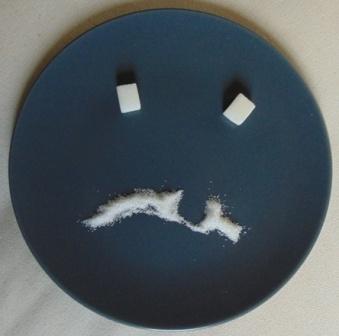 8,000 BC Papua New Guinea knew already sugarcane. Hence ended up in India and China. The ‘sugar stalks’ were chewed. The Hindus discovered they could squeeze the juice and evaporate. When cooling the sticky, brown mush crystals are formed. The Hindus called this ’Sarkara’. This is the root word of ’sugar’ in almost all languages.
8,000 BC Papua New Guinea knew already sugarcane. Hence ended up in India and China. The ‘sugar stalks’ were chewed. The Hindus discovered they could squeeze the juice and evaporate. When cooling the sticky, brown mush crystals are formed. The Hindus called this ’Sarkara’. This is the root word of ’sugar’ in almost all languages.
Via India and Persia sugar came in the Arab world, and so landed in Spain from the ninth century.
70% of the sugar in the world is cane sugar(mainly from the South), 30% sugar beet.
After squeezing juice from the sugarcane stalk sugar syrup is made by evaporation. With beets the sugar extraction is done by warm water (diffusion).
The more sophisticated the (white or brown) sugar, the worse for the body. What remains after refining is pure sucrose or sacharose, a chemical without vitamins and minerals.
On average, six tonnes of beet (Beta vulgaris subsp. Vulgaris var. Altissima) are required to produce a ton of sugar.
In 1825, the average sugar consumption was ’only’ 2 kg per person per year.
In 1999 this was 45.5 kg per person / year!
Too much sugar makes you feel tired, listless and grumpy. The sugar dip is caused by exhaustion the brain. Researchers found about 20 metabolites in a fruit fly study that were affected by a sugar-rich diet. N-acetylaspart or NAA and kynurenine are associated with a healthy brain. Lower levels of these can have negative consequences for health, sleep, memory, depression, feeling of satiety and food intake.
